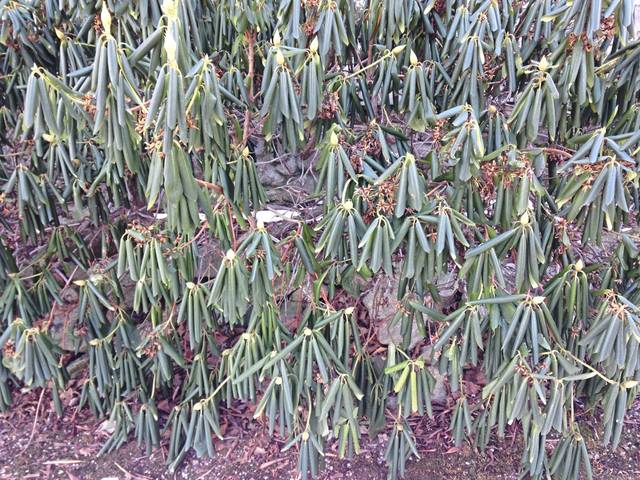Finish up these final fall garden chores
While the important message to “leave the leaves” has hopefully kept most gardeners from raking up every last leaf in their landscape (leaves are critical overwintering habitat for many creatures and should be left in flower and shrub beds for the winter), there are still plenty of other things to be done.
These are tasks that aren’t considered critical, but they will help ensure a more beautiful garden next season.
1. Protect your hydrangeas. I hear from several dozen gardeners every year asking about why their hydrangeas don’t bloom. Mop-head hydrangeas (Hydrangea macrophylla) are notoriously fussy bloomers here in Western Pennsylvania. Because next summer’s flowers are already housed in those dead-looking brown sticks, cold winter winds and late spring freezes can blast out the buds and eliminate any potential blooms.
Building a simple wind barrier around each plant goes a long way toward protecting them from these conditions. Hammer four 1-inch-by-1-inch wooden stakes around each hydrangea, making sure the stakes extend a good foot above the top of the tallest twig.
Wrap burlap or black landscape fabric (not plastic, as it can’t “breathe”) around the outside of the posts, using a staple gun to hold it in place. You’re left with a fabric or burlap “box” around each plant. Be sure the fabric is as taunt as possible because any slack will collect snow and cause the “box” to collapse. Do not cover the top of the burlap “box”; snow will gather inside, adding extra insulation and further cutting down your hydrangea’s wind exposure. When late March arrives, remove the barrier and cross your fingers.
2. Broadleaf evergreens like rhododendrons, azaleas, leather-leaf viburnums and others are often desiccated by winter winds. Their leaves curl under, and when spring arrives, you may find signs of winter-damage in the form of brown leaf blotches and blighted twigs.
To protect broadleaf evergreens from this moisture loss, spray them with a foliar anti-desiccant. These products cover the leaves with a waxy coating that prevents water loss due to high winds and/or lack of winter precipitation. Applied in the late fall or early winter, anti-desiccants like Wilt Pruf and Wilt Stop keep evergreen foliage looking beautiful year-round. Be sure to cover both upper and lower leaf surfaces when applying and follow all label instructions.
3. If you haven’t planted cover crops in the veggie patch this fall, cover the planting beds with several inches of mulch. Use compost, shredded leaves, straw, or untreated grass clippings to prevent soil erosion and add organic matter. Come spring, leave this layer in place and it will act as a weed-preventing mulch. Alternatively, you can till it into the soil where it will decompose and provide nutrients to your plants.
4. Continue to water newly planted trees and shrubs until the ground freezes. Even though air temperatures may be dropping, the soil remains warm enough to promote good root growth. If you planted woody plants this summer or fall, regular winter irrigation is key to their success.
5. If you have fruit trees, remove fallen fruit and leaves from below them and dispose of it properly. Yes, in this situation, I’m telling you not to “leave the leaves.” This is because many common orchard pests overwinter inside fallen fruits or on diseased foliage that sits on the ground. Also remove any fruits remaining on the branches to cut down on overwintering fungal and bacterial diseases.
6. Finally conclude your growing season by taking a soil test. Contact your local county office of the Penn State Extension Service for a soil testing kit. It will cost you a minimal amount and give you a great start on next year’s growing season. Since fewer people test their soil in the fall, the results should arrive quickly. Learning about your soil now enables you to get a jump start on fertilizer preparations and needs for next spring.
Horticulturist Jessica Walliser is the author of several gardening books, including "Attracting Beneficial Bugs to Your Garden," "Good Bug, Bad Bug," and her newest title, "Container Gardening Complete." Her website is jessicawalliser.com. Send your gardening or landscaping questions to tribliving@tribweb.com or The Good Earth, 622 Cabin Hill Drive, Greensburg, PA 15601.
Remove the ads from your TribLIVE reading experience but still support the journalists who create the content with TribLIVE Ad-Free.

